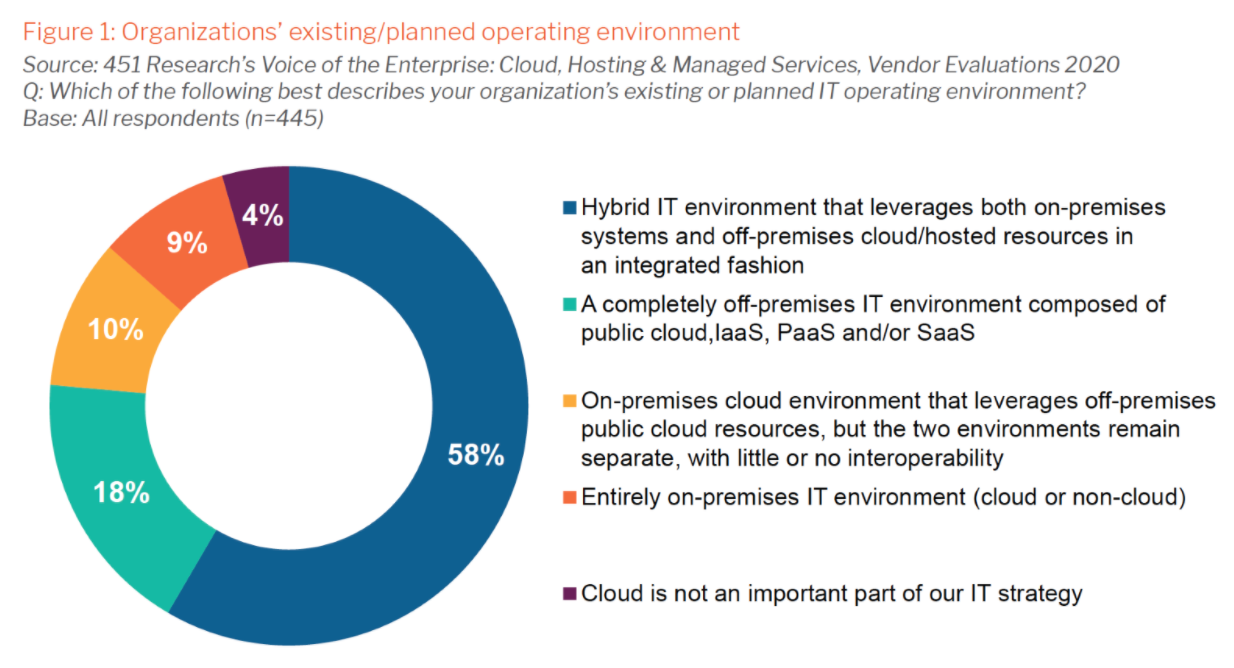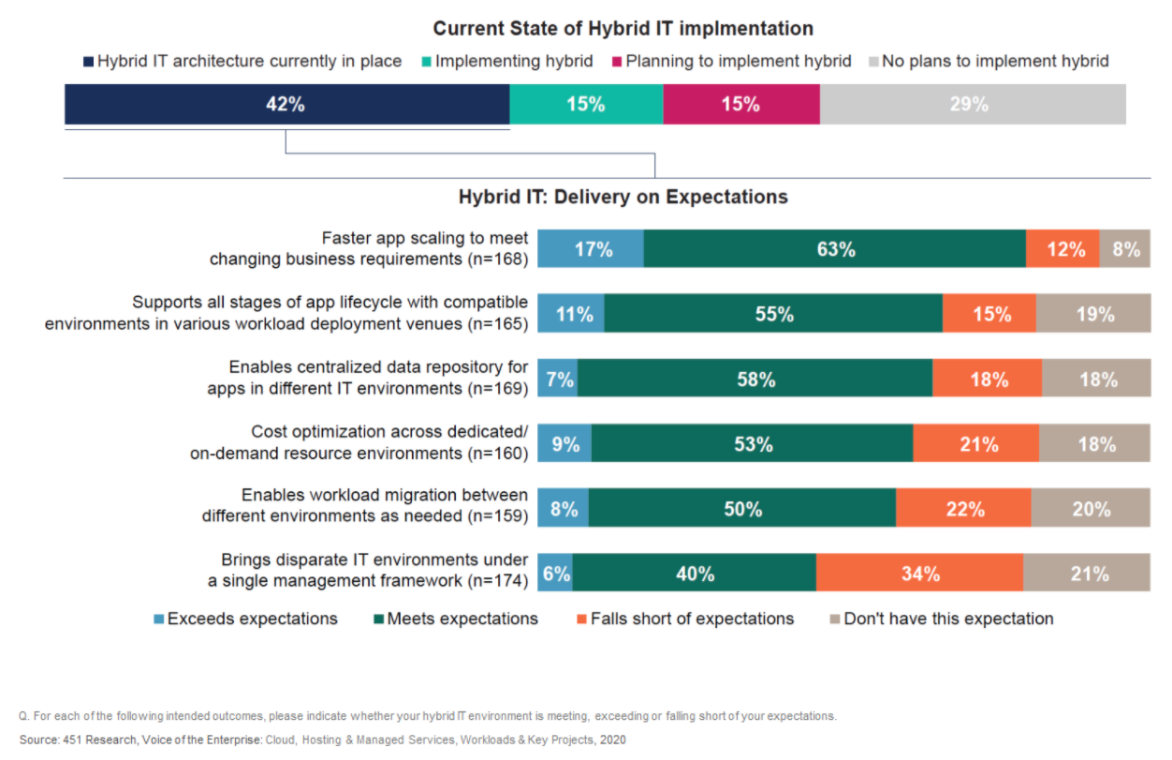Developing a Hybrid IT Strategy That’s Made To Last

We live in a hybrid world and there’s no disputing that hybrid cloud is now the preferred infrastructure mix for many global businesses. But hybrid cloud is really just the entry point for a broader hybrid world – one that envelopes all of IT. Although hybrid IT is poised to provide organizations with the flexibility and agility needed to navigate the ever-changing economic climate, it also comes with additional visibility and management challenges for IT teams.
In our webinar, industry experts from 451 Research and Snow discuss how to develop a lasting Hybrid IT strategy that covers all types of assets and consumption models so that you can prepare for today’s realities and tomorrow’s challenges.
Building a hybrid IT strategy
According to 451 Research, “Hybrid IT combines in-house resources with externally sourced compute, storage, network and application resources, integrated to allow for workload migration between environments, support for an application development lifecycle that extends across environments, multi-location backup and recovery efforts, and seamless execution of applications across disparate environments.”
Hybrid has become the de facto standard IT operating model. In a newly released Pathfinder report from 451 Research and Snow, “Next-Generation IT Asset Management for Hybrid IT,” nearly 60% of organizations have implemented or are planning to implement hybrid IT environments that integrate on-premises and off-premises public cloud/hosted resources, with only 18% planning to take an ‘all-in’ public cloud approach.

Since we live in a hybrid world, it’s time to start learning how to bring everything together.
To fully realize the benefits of hybrid environments, it’s essential for IT teams to start by solving the visibility gap that exists across hybrid infrastructure. Considering the various types of technologies that are being brought together under a hybrid IT model though, it’s easy to understand why visibility would be an issue. Developing a holistic view will mean breaking down barriers and silos to approach and manage hybrid IT like it’s more than just a transitional state.

Bringing disparate IT environments together under a single management framework remains largely aspirational, indicated by 34% of organizations reporting that their hybrid environments fall short of expectations on this front. Department-led technology purchasing, increasing technology blind spots, varying reporting and billing systems and outdated tooling and processes make the task even more difficult.
To develop a hybrid strategy that is made to last, traditional enterprises will need to embrace fundamental structural change and overcome obstacles like technology debt and legacy infrastructures, as well as cultural and organizational inertia.
Breaking down silos
In developing a lasting hybrid strategy, you’ll need to start thinking about your environment as a whole, instead of as on-premises vs cloud and SaaS-delivered vs installed applications. Bringing together areas of your organization and unifying data is critical to the successful management of Hybrid IT. Piecemeal and inconsistent access to and governance of services creates frustration for users and allows costly waste to occur. By bringing together practices such as software asset management, SaaS subscription and cloud management, IT organizations can deliver governance of cloud services and application software, as well as provide data access for different business units or users.
Be wary of DIY approaches that can become costly and require significant time to maintain.
Embracing automation
Many organizations are trying to use traditional IT practices and tooling to manage hybrid environments, but they underestimate what is needed to fully adopt a comprehensive hybrid IT management strategy. To really transform processes, organizations will need to look at new techniques and to external tools and services to supplement their IT so they can continue to move quickly and stay agile.
It’s also important to consider how automation can help drive larger hybrid IT goals, especially as technology environments gain more complexity. Automation allows IT organizations to eliminate repetitive, error-prone tasks and free up their staff to focus on strategic initiatives. For example, building an automated process for brokered and direct cloud access can offer IT teams a way to enable self-service features for their employees without losing visibility and governance. The key will be to look for ways to include these automated and/or self-service features into legacy or on-premises technology so that users have a common experience no matter the mix of technologies and deployment models being used.
The next steps
Some of the key findings from our recent report focused on establishing visibility.
- Risk mitigation. Knowing what technology is running in your environment across on-premises and cloud environments is vital in order to manage the responsible and secure use of that technology.
- Cost management. Data is needed to provide a complete picture of what is being used in order to drive technology investment and build programs to repurpose savings to fund growth initiatives.
- Cloud governance. Tools should provide full visibility into cloud and SaaS environments, automate cloud service delivery and optimize subscription costs.
Beyond developing a strategy for hybrid IT that offers improved visibility, the next phase of hybrid IT will be about automated provisioning, governance and process orchestration. Organizations looking for cost visibility, faster service delivery and savings will need tools that can help automate processes so that they can work more efficiently.
Be sure to download the complete report for additional insights and guidance on how you can prepare for the hybrid IT evolution.